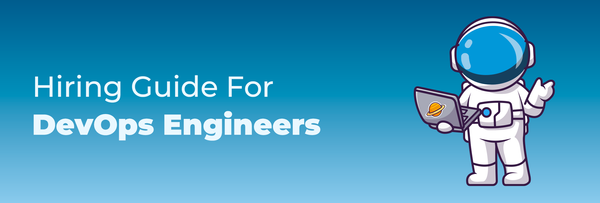Effective Communication Strategies for Remote Engineering Teams: Tools and Techniques for Seamless Collaboration

Are missed deadlines and disjointed workflows plaguing your remote engineering team?
Well, you are not alone.
86% of employees identify the absence of collaboration or ineffective communication as significant factors contributing to workplace failures.
In today's digital age, effective communication lies at the heart of successful collaboration, especially in dispersed work environments.
Welcome to our blog, where we delve into the vital topic of "Effective Communication Strategies for Remote Engineering Teams: Tools and Techniques for Seamless Collaboration."
Join us as we explore actionable insights and practical solutions to overcome the challenges faced by remote teams, empowering you to foster cohesion, productivity, and innovation across distributed engineering environments.
Without further ado, let’s get started.
Possible Communication And Collaboration Problems Faced By Remote Engineering Teams
Table 1 highlights the various communication and collaboration issues that remote engineering teams may encounter and emphasizes the importance of addressing these challenges to enhance teamwork and productivity.
Best Techniques for Seamless Collaboration of Remote Engineering Teams
- Overcommunicate for Success
Transitioning from in-person interactions to virtual communication is a significant aspect of remote collaboration.
It encompasses the shift to digital platforms like chat rooms and video meetings and demands a restructuring of how instructions are framed and ideas are conveyed.
Overcommunication emerges as a pivotal element in fostering effective remote collaboration.
However, it's essential to delineate that overcommunication here doesn't imply incessant messaging or micromanagement, which can overwhelm team members and undermine trust in their abilities.
Overcommunication, in essence, involves striving for utmost clarity and conciseness in every communication exchange. To excel in this domain, consider the following strategies:
- Prioritize Video Calls
Did you know that in 2025, the market size for video conferencing is projected to attain $8.67 billion, accompanied by a compound annual growth rate (CAGR) of 9.5%?
Regular video calls provide a platform for face-to-face interactions, compensating for the absence of physical cues like facial expressions and gestures inherent in written communication.
- Mindful Messaging
Exercise caution in the wording of messages, emphasizing brevity and precision to ensure unambiguous communication.
- Cultural Sensitivity
Be mindful of cultural diversity within the team. Avoid using idioms or regional expressions that might be misunderstood or lost in translation, especially in international teams.
- Encourage Questions
Foster an environment where team members feel comfortable asking questions to clarify instructions, processes, or any other aspects confusing.
- Cloud Based Collaboration
Moving collaboration efforts to the cloud is a pivotal strategy for enhancing communication and collaboration within remote engineering teams.
As per the findings presented in the Facts & Factors report, the worldwide market for Cloud Based Collaboration Software was valued at approximately USD 10.75 billion in 2023.
It is anticipated to reach approximately USD 33.60 billion by 2032, exhibiting a compound annual growth rate (CAGR) of approximately 13.50% during the forecast period from 2024 to 2032.
By leveraging these platforms, teams can overcome geographical constraints and facilitate seamless collaboration regardless of physical location.
Cloud tools offer unparalleled accessibility, allowing team members to work from anywhere with an internet connection.
This flexibility fosters a dynamic work environment and ensures continuity of work processes.
Moreover, this collaboration enables real-time updates and synchronization of project files, ensuring that all team members have access to the latest information.
Centralized cloud platforms serve as unified hubs for project management, task allocation, and communication, streamlining coordination efforts and enhancing transparency.
By selecting the right tools, providing adequate training, and prioritizing data security measures, remote engineering teams can realize the full potential of cloud-based collaboration.
Ultimately, embracing cloud technology empowers teams to achieve greater efficiency, productivity, and innovation in their collaborative endeavors.
- Crafting Clear Communication Guidelines
Identify the most effective communication channels suited to your team's needs, considering factors such as urgency, complexity, and accessibility.
Whether it's email, instant messaging platforms, or video conferencing tools, establish clear guidelines on when and how each channel should be utilized.
- Clarifying Response Times
Establish realistic expectations regarding response times for different communication channels.
Define acceptable turnaround times for emails, messages, and meeting invitations to ensure timely communication and prevent misunderstandings.
- Communicating Guidelines Effectively
Convey the importance of effective communication in remote work environments to all team members.
Clearly articulate the rationale behind the established guidelines and emphasize their role in fostering collaboration, productivity, and cohesion within the team.
- Creating a Communication Charter
Develop a comprehensive team communication charter that encapsulates the established norms and guidelines.
This document serves as a reference point for team members, outlining preferred communication methods, expected response times, and protocols for sharing updates and information.
By establishing clear communication guidelines and effectively communicating them to the team, remote engineering teams can cultivate a culture of transparency, efficiency, and collaboration, laying the foundation for success in their endeavors.
Before we move on to the most effective tools for effortless communication and collaboration of remote engineering teams, here’s a bonus tip for you.
Bonus Tip: Elevate Achievements with a Digital "Wall of Fame"
Create a digital platform, such as a virtual bulletin board or shared document, to showcase notable achievements and milestones. Share success stories, completed projects, and positive feedback from clients to inspire and uplift team morale.
Top 4 Tools For Effective Collaboration Across Remote Engineering Teams
Here are some of the tools you must explore for managing remote engineering teams.
Slack is a widely used messaging platform that facilitates real-time communication among team members.
With features like channels for organized discussions, direct messaging, and integration with various tools and services, Slack promotes efficient collaboration and information sharing across remote engineering teams.
To top it all, according to a survey, 91% of individuals utilizing Slack reported an enhancement in workplace communication.
GitHub is a leading platform for version control and collaborative software development.
It allows remote engineering teams to work together on coding projects, manage code repositories, track changes, and merge contributions seamlessly.
With features like pull requests, issue tracking, and code review tools, GitHub enhances collaboration and coordination among team members working on software development projects.
Did you know that GitHub is utilized by over 90% of Fortune 100 companies?
Zoom is a popular video conferencing tool that enables remote engineering teams to conduct virtual meetings, brainstorming sessions, and presentations.
With features like screen sharing, chat, and virtual backgrounds, Zoom provides an immersive collaboration experience, allowing team members to communicate effectively and collaborate in real-time regardless of their geographical locations.
Jira Software, developed by Atlassian, is a popular project management tool widely used by engineering teams.
It offers features such as agile boards, customizable workflows, and extensive reporting capabilities tailored to software development projects.
Jira Software enables teams to plan, track, and release software iterations efficiently, facilitating collaboration and transparency throughout the development lifecycle.
In today's competitive landscape, engineering teams are constantly seeking innovative solutions to propel their projects forward.
With the demand for top-tier talent on the rise, finding skilled software developers who seamlessly integrate into existing teams can be a daunting task.
Enter Teamo: your go-to solution for accessing a pool of pre-screened, high-caliber developers from emerging markets.
With Teamo, you can grow fearlessly, knowing that you have a superteam of 10x talent at your fingertips.
Our platform ensures seamless integration of remote developers into your team, allowing for fast and affordable scaling without compromising on quality.
Each developer on Teamo undergoes extensive vetting, guaranteeing that you're working with the best of the best.
Boost your business and stay ahead of the curve with Teamo's cutting-edge talent solution.
FAQs
- What are the 5 C's of effective teamwork?
Constructing a robust team hinges on prioritizing the five C's of teamwork: Communication, Camaraderie, Commitment, Confidence, and Coachability.
- What is a key principle of effective teamwork?
A cornerstone principle of effective teamwork revolves around fostering ownership and accountability among team members.
This entails ensuring that each individual feels a sense of belonging within the team structure.
When team members take ownership of their responsibilities and hold themselves accountable for their actions, it cultivates a culture of trust, collaboration, and mutual respect.
In contrast, a blame culture can hinder teamwork by undermining morale and discouraging proactive engagement.
Therefore, promoting ownership and accountability is essential for fostering a cohesive and productive team dynamic.




